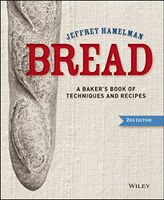Advertisement
Preparation info
- Difficulty
Medium
Appears in
Published 2004
Method
Dividing and Shaping: Refer to the illustrations for a visual description of the shaping process. This traditional shape (which translates to “big head”) is formed using 2 balls of dough, in this case 1 ball weighs
9 ounces


